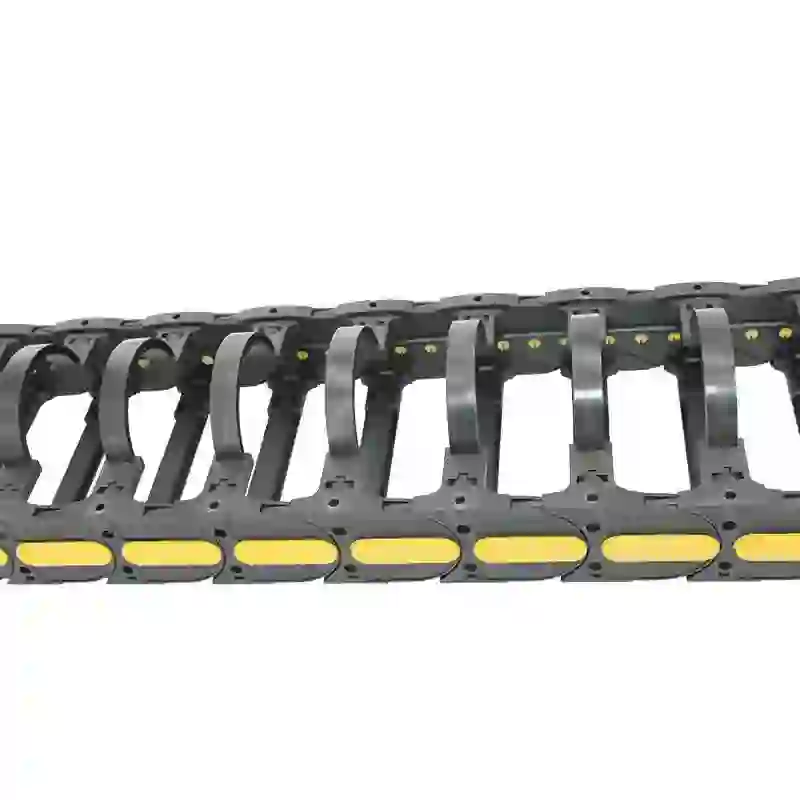closed drag chain
Understanding Closed Drag Chains Design, Applications, and Benefits
In the world of mechanical engineering and automation, the closed drag chain plays a crucial role in the safe and efficient management of cables and hoses. Often referred to as cable carriers or energy chains, closed drag chains provide a systematic way to transport and protect various types of moving cables and hoses in machinery and equipment. This article delves into the design, applications, and advantages of closed drag chains, highlighting their significance in modern engineering.
What is a Closed Drag Chain?
A closed drag chain is a flexible channel designed to guide and protect cables and hoses as they move with machinery parts. Unlike open drag chains, which only partially encase the cables, closed drag chains offer complete casing, preventing dust, debris, and moisture from harming the internal elements. This design ensures cables and hoses remain organized, reducing the risk of tangling or damage during operation.
Closed drag chains come in various shapes, sizes, and materials, with options for customization to accommodate specific applications. Common materials include plastic, steel, and aluminum, each offering unique benefits depending on the environment and operational requirements.
The Design of Closed Drag Chains
The design of closed drag chains is paramount for their functionality and efficiency. Key considerations in their design include
1. Bend Radius Closed drag chains are engineered with a specific bend radius to allow for smooth movement of cables and hoses while preventing excessive wear and tear.
2. Link Design The links of the chain must be robust yet flexible enough to accommodate various types of cables, ensuring they are held securely throughout their range of motion.
3. Mounting Options Closed drag chains can be mounted in a variety of orientations, whether vertically or horizontally, making them versatile for different machinery setups.
4. Noise and Vibration Dampening Many designs incorporate features that reduce noise and vibration, contributing to a more pleasant working environment.
5. Protection Features Many closed drag chains come equipped with seals or covers that provide additional protection against environmental factors like dust, water, and chemical exposure.
By considering these design elements, engineers can create closed drag chains that effectively meet the needs of their specific applications.
Applications of Closed Drag Chains
Closed drag chains are widely used across various industries due to their protective and organizational functions
. Some common applications includeclosed drag chain

1. Automated Machinery In manufacturing, closed drag chains route electrical cables and hoses for automated systems, ensuring smooth operation and reducing the risk of downtime due to cable failure.
2. CNC Machines CNC (Computer Numerical Control) machines require precision and organization. Closed drag chains help manage the extensive wiring and pneumatic hoses required for these machines.
3. Robotics In robotics applications, closed drag chains facilitate safe cable management, allowing robots to move freely without the risk of entanglement or damage to their wiring.
4. Material Handling In environments where equipment is subject to heavy loads and movement, closed drag chains protect and guide the necessary cables and hoses.
5. Heavy Equipment Construction and agricultural machinery often utilize closed drag chains to manage hydraulic hoses and electrical wiring, ensuring longevity and reliable performance.
Benefits of Using Closed Drag Chains
The incorporation of closed drag chains in machinery brings several advantages
1. Enhanced Durability The closed design provides superior protection against environmental damage, extending the lifespan of cables and hoses.
2. Reduced Maintenance Costs By preventing wear and tear on cables and hoses, closed drag chains significantly reduce maintenance and replacement costs.
3. Improved Cable Organization Closed drag chains promote neat and organized setups, making it easier for technicians to manage and troubleshoot systems.
4. Increased Safety Proper cable management minimizes the risk of tripping hazards or equipment malfunctions caused by tangling cables.
5. Optimized Space Utilization Closed drag chains can be designed to fit into compact spaces while effectively organizing multiple cables, freeing up valuable floor space.
Conclusion
In conclusion, closed drag chains play a vital role in modern engineering, offering a host of benefits across various industries. Their thoughtful design caters to diverse applications, ensuring the safe transport and protection of essential cables and hoses. As technology continues to evolve, the importance of such components in machinery and equipment will only grow, highlighting the need for ongoing innovation and improvement in drag chain design and functionality.








